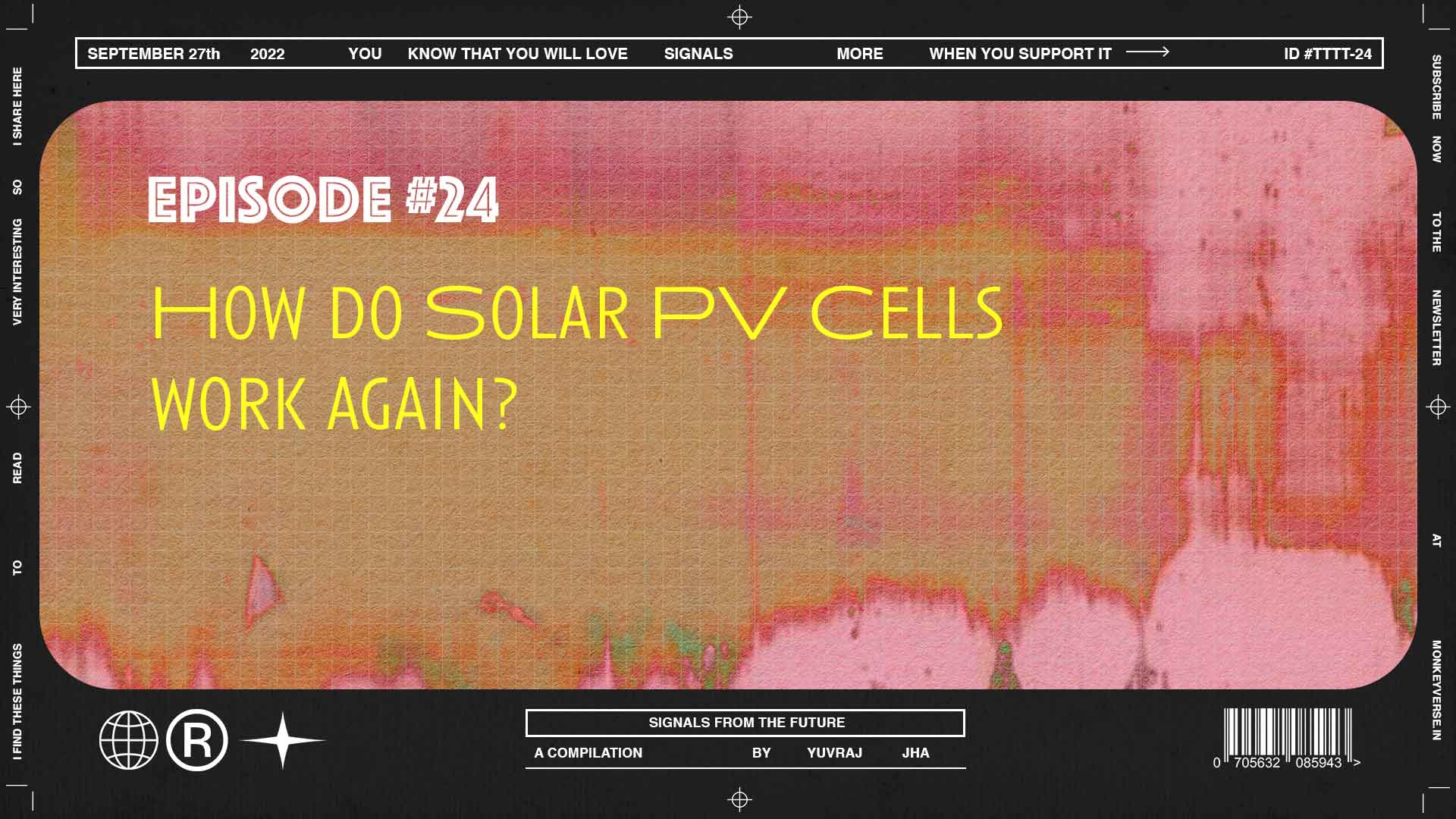
What are solar pv cells made of again?
In the last episode, I covered how there is a tsunami of PV waste headed toward the already burdened Indian recycling system and how that makes up for a new and enticing business model. This week let’s do a deep dive into the actual workings of a traditional solar panel.
Strangely when you search for ‘What are solar panels made of?’, almost all websites, mostly of panel manufacturing companies, suggest only silicon, metal frames, copper wires and other innocent parts and paraphernalia. Which is absurd. But when searching for solar waste instead…There are some disturbing components that magically pop up.
What are the panels made of?
A solar panel is essentially made up of several sheets of silicon crystals called cells. Each cell making up a solar panel is sandwiched by an aluminium and glass layer. To keep the Silicon pure, the production includes nitrogen trifluoride and sulphur hexafluoride, some of the most harmful greenhouse gases around. And normally silicon is recyclable, but to improve the solar cells’ electrical efficiency, metals such as cadmium and lead (also for soldering) are added. This makes them difficult to recycle, since it takes considerable energy to extract hazardous metals.
And then add to these glass casing, plastic backing, silver and copper. The problem is that most solar recycling plants simply remove the silver and copper from the cells and recycle the contaminated glass and plastic casing by burning them in cement ovens. Which is not a good sign.
To my surprise, I also found, that the heavy metals in solar panels — namely lead and cadmium — can leach out of the cells and get into groundwater, as well as affect plants. These metals also have a record for detrimental effects on human health. Lead is commonly known to impair brain development in children, and cadmium is a carcinogen, which I knew.
So not a pretty picture then.
Although, studies suggest that most solar panels offset their emission costs within two years of installation and with the average lifespan of 8-10 years, they would still be considered a green alternative if you ignore the environmental impact of lead and cadmium.
Okay, so how do solar panels work then?
Solar photovoltaic cells or PV cells convert sunlight directly into DC electrical energy. The performance of the solar panel is determined by the cell type and characteristics of the silicon used, with the two main types being monocrystalline and polycrystalline silicon. The base of the PV cell is a very thin wafer, typically 0.1mm thick, and is made from either a positive p-type silicon or negative n-type silicon. There are many different cell sizes and configurations available which offer different levels of efficiency and performance including half-cut or split cells, multi-busbar (MBB) cells, and more recently shingled cells using thin overlapping wafer strips.
When exposed to direct sunlight a typical home solar panel produces about 300 watts in one hour which means that in a normal day during summer, comprising 10 hours of sunlight, it can produce around 3000 watts or 3 kWh per day. This could vary depending on the number of hours of sunshine received during the day and the location of the household.
According to the Council for Energy, Environment and Water in their study of electricity consumption during the Pandemic lockdowns — For the period 23 April -23 May 2020, the average household consumption (5.7 kWh/day) was 22 per cent less than the predicted value (7.3 kWh/day). But it has steadily increased ever since.
There is a great repository of articles on energy.gov explaining the different kinds of processes further.
How does the orientation and tilt angle of the panel effect efficiency?
In the northern hemisphere, solar panels should be facing south and homes with east west facing produce about 15% less energy and facing north reduces about 30% energy loss.
For fixed orientation where the panel almost always intercepts the greatest amount of solar radiation during the year minor tweaking can yield 3 – 5 percent extra gain and generally recommend somewhat lower angle for fixed tilt. However, in general the horizontal tilt of the panels may be adjusted 4 times a year: at the latitude angle in spring and autumn, (Latitude – 15˚) in summer, and (Latitude + 15˚) in winter. For Mumbai (latitude: 18˚ 55’N) summer angle 3˚ and the winter angle 33˚. For Delhi (Latitude: 28˚ 38’N) the summer angle will be 13˚ and the winter angle 43˚.
—
As this series progresses, I am quite uncertain what it really means to go green. Of course, my attempt with this is to research and report and not comment or criticise, but the reality of our situation is quite dire and it seems that a lot of information is kept out of the public view; mostly to reduce fear mongering, though all this is quite bleak given the scale of the transition and its repercussions.


Leave a Reply